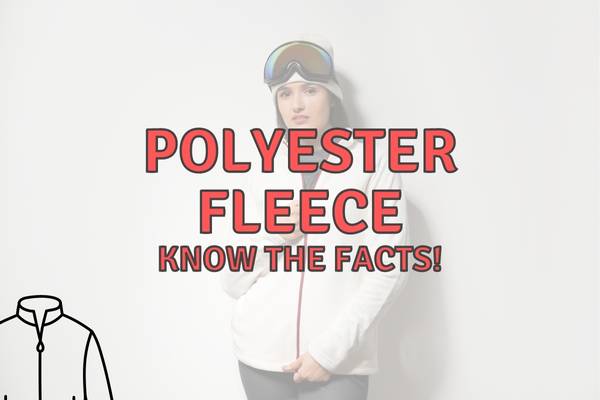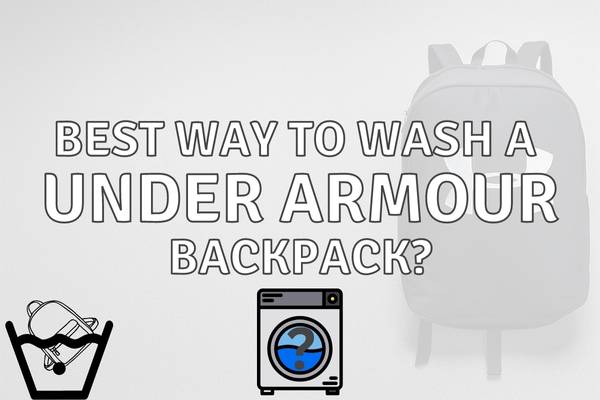In this blog post we’ll be taking a closer look at the breathability of polyester fleece, exploring how fleece jackets can offer both insulation and ventilation at the same time!
While fleece is not as breathable as natural fabrics such as wool, it is generally more breathable than cotton and denser synthetic fabrics. This is because most types of fleece are porous and designed with moisture-wicking properties to help with breathability. This makes fleece more comfortable option for activities such as hiking or running, where you are likely to sweat.
We’ll also discuss why certain types of fabric may not provide the same level of comfort as their synthetic counterparts, before delving into the key questions around which type of base layer material provides optimal levels of protection from cold temperatures.
So if you’re wondering whether or not your next adventure should include packing away a trusty piece of polyester clothing then read on!
Contents
What Is Fleece And What Is It Made From?
Fleece is a type of fabric made from polyester fibers that are fluffed up to contain a lot of air in between.
This amount of air makes it lightweight, soft and warm, making it an ideal choice for outdoor apparel such as jackets and vests.
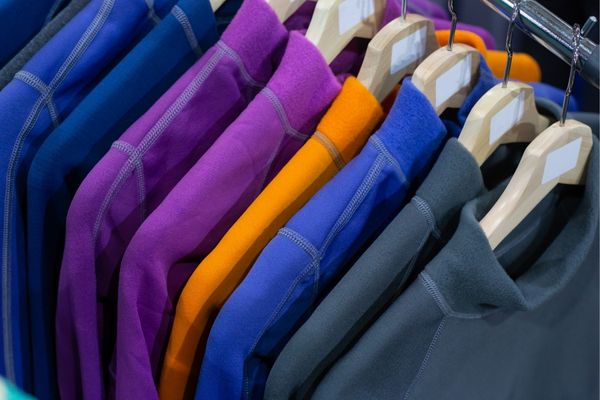
Fleece is typically made from polyester but can be blended with other fabrics to create a more breathable material that helps regulate body temperature while keeping you warm in cold weather conditions.
For example, cotton-polyester blends are often used for base layers because they provide insulation without trapping heat or moisture against the skin like some synthetic materials do.
Whereas polyester fleece is also fairly durable and resistant to wear and tear so it can withstand repeated use over time without losing its shape or color, blends including cotton or nylon are usually stronger and last longer.
When shopping for outdoor fleece clothing, look for items labeled “breathable” or “moisture wicking” which indicates that the fabric will help keep you dry by drawing sweat away from your body instead of trapping it against your skin.
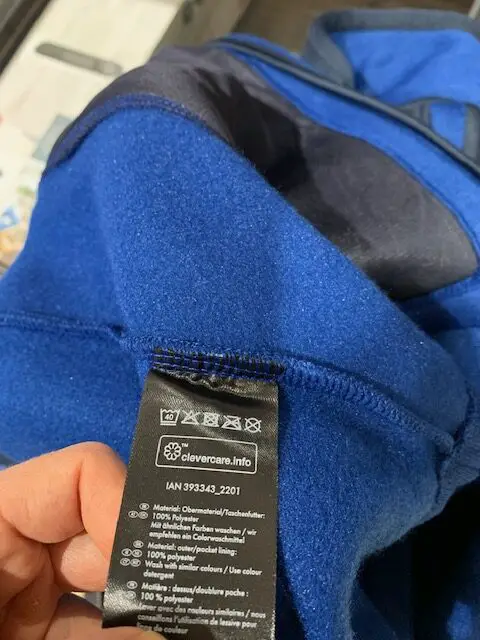
Generally, lighter fleeces are more breathable but may not provide enough protection if temperatures drop below freezing; whereas heavier fleeces can offer more warmth but could be too hot during active activities like hiking or skiing when worn alone without additional layers.
Blends of polyester fleece and wool will increase breathability, be warmer when wet and smell less.
In terms of warmth, polyester fleece provides excellent insulation when layered properly with other garments such as shell- or down jackets.
The key is to layer up with multiple thin layers rather than one thick layer since this allows air circulation between each garment which helps regulate body temperature better than one thick layer would do on its own.
When choosing an outer layer jacket or vest made from polyester fleece, consider the weight of the garment as well as its breathability in comparison to other materials such as nylon or wool.
Polyester fleece is a great choice for outdoor activities due to its lightweight and breathability. Now let’s look at how breathable polyester actually is.
Key Takeaway: Polyester fleece is a great choice for outdoor apparel due to its lightweight, soft and warm qualities. Look for items labeled “breathable” or “moisture wicking” which will help keep you dry while regulating body temperature. When layering up with polyester fleece, consider the weight of the garment as well as its breathability in comparison to other materials such as nylon or wool.
What are the benefits of polyester fleece?
Polyester fleece is a popular fabric choice for outdoor enthusiasts and hikers. It’s lightweight, warm, and breathable – making it an ideal material for activewear. Here are some of the key benefits of polyester fleece:
Durability: Polyester fleece is highly durable and resistant to wear-and-tear. This makes it perfect for those who spend time outdoors in harsh conditions or participate in activities that require frequent movement. The fabric won’t easily tear or rip like other fabrics such as cotton or wool can, so you don’t have to worry about replacing your clothing often.
Breathability: Polyester fleece is fairly breathable, which helps keep you cool during physical activity while still providing warmth when needed. Unlike heavier materials such as wool or nylon, polyester doesn’t trap heat against your body but instead allows air to circulate freely around it – keeping you comfortable no matter how strenuous the activity may be.

Easy Care: One of the best things about polyester fleece is its easy care requirements; this fabric does not need ironing and can usually be washed on a gentle cycle with cold water without any problems.
Additionally, because it’s synthetic rather than natural fiber like cotton or wool, there’s less chance of shrinkage after washing and drying cycles compared to these fabrics too!
Polyester fleece is a great choice for those looking for an affordable fabric option. It is made from synthetic fibers, which makes production costs much lower than other types of fabrics. This cost-effectiveness translates to savings for the consumer (but not always optimal for the environment!).
Additionally, polyester fleece is lightweight and breathable, making it comfortable to wear in any season.
Furthermore, it’s easy to care for and doesn’t require special laundering instructions like some fabrics do. It will last longer and can also be recycled after doing its last hike…
All these factors make polyester fleece an ideal choice when shopping for fabric options that are both budget friendly and practical.
Polyester fleece is a great choice for hikers and outdoor enthusiasts looking for breathable, lightweight fabric that provides warmth. Next, let’s look at the drawbacks of polyester fleece to help you decide if it’s the right material for your needs.
Is fleece a good base layer?
Fleece is a synthetic fabric made from polyester, which has become increasingly popular for outdoor activities like hiking and camping.
- Lightweight and soft
- Moisture-wicking & breathable
- Good insulation when layered properly
It’s lightweight, warm, and breathable – making it an ideal base layer in cold weather.
If you have been here on my blog before, you will know that I am a huge proponent of wool in base layers, so why would I consider using fleece instead?
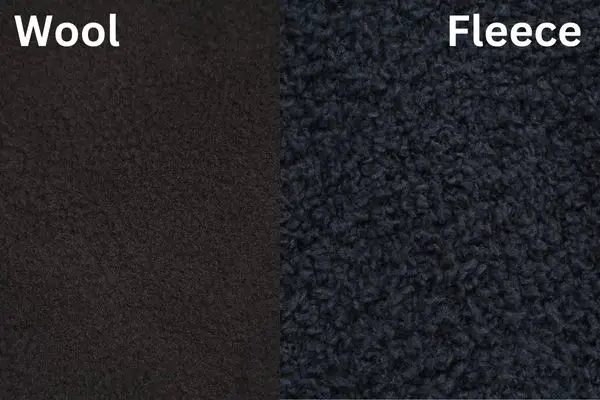
I’ll give you my personal views below.
Consider weight & breathability
When choosing a base layer material, breathability is one of the most important factors to consider.
Wool is more breathable than fleece because its fibers are better at trapping air and wicking away moisture from your skin.
This helps keep you dryer and warmer during strenuous activity or when temperatures drop below freezing.
Fleece does have some breathability but not as much as wool so if you tend to get sweaty easily then wool might be a better option for you.
Fleece is more durable than wool
Another factor to consider when choosing between fleece and wool is durability.
Fleece tends to wear out faster than wool due to its thinner fibers that can snag or tear easily with regular use over time whereas wool can last longer even after multiple washes due to its thicker fibers that resist tearing or fraying more effectively than those of fleece fabrics do.
Additionally, unlike many other synthetic fabrics such as nylon or spandex, fleece doesn’t stretch out of shape over time, which makes it less likely that your clothing will fit differently after repeated washings or long-term use outdoors in extreme conditions.
Also, fleece will not shrink in the washer or dryer like most fine wool types do!
Finally, price should also be taken into account when deciding between these two materials since they both come in different weights (thicknesses) with varying prices depending on quality level desired by each user.
However generally speaking fleeces tend to cost slightly less than their equivalent weight counterpart in merino wools.
This difference may vary significantly depending on the brand or manufacturer chosen by the buyer, so it is important to research thoroughly before committing to any purchase decision.
Fleece is a great base layer for hikers and outdoor enthusiasts because of its warmth, breathability, and lightweight properties.
Key Takeaways: When deciding between fleece and wool for outdoor activities like hiking or camping, breathability, durability, and price should all be taken into account. Wool is more breathable than fleece but tends to cost slightly more.
Fleece may wear out faster due to its thinner fibers that can snag easily with regular use over time whereas wool has thicker fibers that resist tearing or fraying better.
Additionally, fleece does not stretch out of shape like other synthetic fabrics such as nylon or spandex which makes it a great choice for those looking for long-term use outdoors in extreme conditions.
Is polyester fleece a good outer layer?
It’s lightweight and comfortable, making it ideal for hiking and other activities when not too cold and windy.
Fleece also offers good insulation, keeping you warm in cold weather without being too bulky or heavy.
However, there are some drawbacks to using polyester fleece as an outer layer that should be considered before investing in this type of garment.
One major drawback is that polyester fleece does not offer much protection from the wind or rain, so some sort of shell or windbreaker is recommended on top.
While it can help keep your body temperature regulated when worn over a base layer of wool or synthetic fabric such as nylon, it won’t do much to protect you from the elements if exposed directly to them.
If you plan on spending time outdoors during inclement weather conditions, then a waterproof jacket or at least a windbreaker may be more suitable than a polyester fleece one.
To improve breathability when wearing fleeces outdoors try pairing them with lighter fabrics such as cotton t-shirts underneath so they don’t trap too much heat against your skin and cause discomfort due to sweat build up.
Finally, another consideration when choosing whether or not to wear polyester fleeces outside is their durability.
Although they are usually quite robust and able to withstand some wear and tear, especially those made with higher quality materials, they will eventually start showing signs of age in the form of pilling after multiple washes and general use over time.
This is something worth bearing in mind if planning on taking them out frequently throughout the year.
Overall, polyester fleece can be a good choice for an outer layer when hiking and other outdoor activities due to its lightweight and breathable properties.
But I personally only use fleece as an outer layer when it is milder weather without much wind and rain.
Key Takeaway: Polyester fleece is a popular choice for outdoor clothing due to its lightweight and comfortable nature, but it has some drawbacks. It doesn’t offer much protection from the elements or windrain, it isn’t super breathable which can lead to overheating, and it’s not as durable as other fabrics. To improve breathability when wearing fleeces outdoors pair them with lighter fabrics like wool t-shirts underneath.
Does polyester fleece breathe well?
But when it comes to breathability, does polyester fleece really measure up?
When compared to other fabrics such as wool or cotton, polyester fleece does not breathe as well. This means that moisture can become trapped in the fabric and cause discomfort or even skin irritation. However, this doesn’t mean that you should avoid wearing polyester fleece altogether – there are ways to improve the breathability of your clothing if you choose to wear it.
One way to increase the breathability of your clothing is by choosing lightweight materials with a tight weave pattern. These fabrics will allow air flow more easily than heavier materials with looser weaves.
Additionally, look for fleece garments made from (or blended with) more “breathable” fabrics like wool or nylon, which have been designed specifically for increased airflow and ventilation.

Another way to improve the breathability of your clothes is by layering appropriately according to temperature and activity level.
For example, if you’re going on a hike in cooler weather then consider wearing a base layer made from merino wool or synthetic material beneath your outer layer of polyester fleece – this will help keep sweat away from your body while still providing insulation against cold temperatures outside.
Finally, be sure not to overdress when engaging in activities outdoors – no matter what type of fabric you choose!
If you start feeling too hot then remove some layers so that excess heat can escape through evaporation rather than being trapped inside multiple layers of clothing where it can cause discomfort or skin irritation due perspiration buildup within the fibers of the garment itself .
Overall, while polyester may not be as breathable as other natural fibers such as cotton or wool, it still has its place in outdoor apparel due to its strength, durability and warmth.
With proper layering techniques and selecting lightweight materials with tighter weaves, one can ensure that they stay comfortable during any activity outdoors regardless of the type of fabric chosen.
Polyester fleece is a popular fabric for outdoor enthusiasts due to its warmth and breathability, but it’s important to understand how well polyester actually breathes in order to make the best choice for your next hike.
Key Takeaway: Polyester fleece is a popular choice for outdoor apparel due to its warmth and durability, but it isn’t as breathable as other fabrics like cotton or wool. To increase the breathability of polyester clothing, choose lightweight materials with tight weaves, layer appropriately according to temperature and activity level, and avoid overdressing. By following these steps you can ensure that your clothes keep you comfortable while engaging in any activity outdoors.
At what temperature should you wear fleece?
One of the most popular materials for cold weather wear is polyester fleece. It’s lightweight and breathable, making it a great choice for hikers and other outdoor enthusiasts. But when should you wear fleece?
The temperature range in which you should wear fleece depends on what else you are wearing. Generally speaking, if temperatures are between 40-60 degrees Fahrenheit (4-15 Celsius), then fleece is an appropriate option.

However, this can vary depending on your individual body temperature as well as any additional layers that may be worn over or under the fleece garment.
For example, if temperatures drop below 40F (4C) but you have a waterproof jacket over your fleece layer, then you may still be comfortable enough to go outdoors without having to switch out your clothing items entirely.
In addition to warmth retention properties provided by the fabric itself, layering with multiple pieces of clothing helps keep heat close to your body while allowing moisture from sweat and rain away from skin contact – another important factor when deciding how warmly dressed one needs to be for an activity outside in colder climates or seasons.
Polyester fleeces come in different weights and thicknesses so they can provide more insulation than thinner fabrics like cotton or nylon alone would offer at similar temperatures.
However heavier weight fleeces tend not to breathe as well as lighter ones do so they might become too hot if worn during active pursuits such as hiking or running in warmer conditions than their rating suggests they should handle comfortably – something worth bearing in mind before investing heavily into these garments!
When choosing a fleece for cold weather, it is important to consider the fabric weight and type. Fleece fabrics come in different weights ranging from light to heavy, with heavier weights providing more insulation against wind chill.
Additionally, some fleeces are designed with lofting power which helps protect against wind chill even better than other types of fabric.
However, it is important to remember that all fabrics lose their insulating ability when wet so make sure whatever item chosen has been treated with water repellent finishes before heading out into inclement weather.
Fleece is a great way to stay warm in cold temperatures, but it’s important to know the right temperature for wearing it.
Key Takeaway: When choosing a fleece for cold weather activities, it is important to consider the fabric weight and type. Heavyweight fleeces offer more insulation against wind chill, but are less breathable than lighter options. Additionally, all fabrics lose their insulating ability when wet so make sure whatever item chosen has been treated with water repellent finishes before heading out into inclement weather. For temperatures between 40-60 degrees Fahrenheit (4-15 Celsius), polyester fleece is an appropriate option; however this can vary depending on individual body temperature as well as any additional layers that may be worn over or under the garment.
How to improve the breathability of fleece clothing?
If you consider buying fleece clothing or already have some, how do you ensure to achieve maximum breathability from your fabric?
First off, it is important to consider what fabric you buy and consider the parameters that affect the breathability to choose the most breathable fabric. E.g. less dense, non-layered fleece will typically be more breathable.
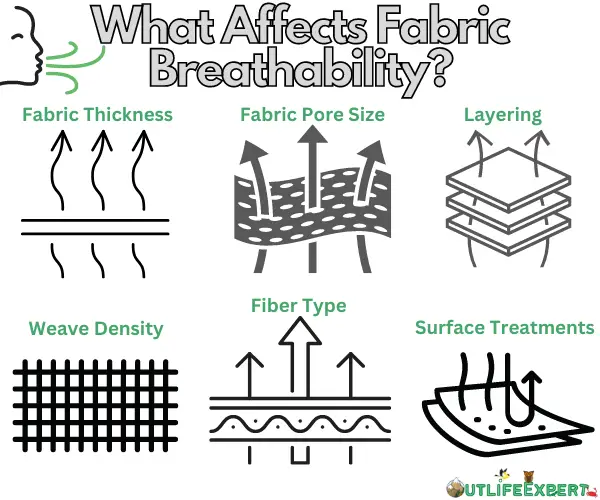 influence the breathability of a fabric.” class=”wp-image-6615″/>
influence the breathability of a fabric.” class=”wp-image-6615″/>If you’re looking to improve the breathability of some polyester clothing you already have, there are several steps you can take:
Choose Lightweight Fabrics: Look for lightweight fabrics when shopping for polyester garments. The lighter the fabric, the more air it will allow through, making it easier to regulate body temperature while outdoors. Also look for loose-fitting clothes that won’t restrict airflow around your body.
Look For Vents Or Mesh Panels: Many outdoor jackets and pants feature vents or mesh panels designed to increase ventilation and reduce overheating during physical activity. These features help keep you cool by allowing air to flow freely in and out of your garment while on the move.
Use Detergent Designed For Activewear: When washing polyester items, use a detergent specifically designed for activewear like sports apparel or technical gear rather than regular laundry detergents which may contain harsh chemicals that could damage delicate fibers over time.
Additionally, rinse twice after washing with cold water to remove any residue from the detergent which could block airflow through the fabric if left behind after laundering.
Hang all washed items outdoors or in a well-ventilated room until they are completely dry before wearing them again.
This will ensure maximum breathability when using them next time. Try to avoid tumble drying whenever possible, as this can cause shrinkage which reduces airflow through the material, not ideal for long hikes.
By choosing the right weight and weave of polyester fabric, you can increase its breathability. Wearing a wicking layer beneath your clothing can also help to keep you cool and comfortable while out on the trail.
Key Takeaway: When shopping for polyester outdoor clothing, look for lightweight fabrics and garments with vents or mesh panels. Additionally, use a detergent specifically designed for activewear when washing items and hang them outdoors to dry before wearing again. This will help ensure maximum breathability when using the garment on hikes or other activities.
FAQs
Conclusion
In conclusion, polyester fleece is a great choice for hikers and outdoor enthusiasts looking for breathable clothing.
It is lightweight, warm and comfortable, making it an ideal base layer or outer layer depending on the temperature.
While it does not breathe as well as some other fabrics such as wool or cotton, there are ways to improve its breathability by layering with other materials or using specific treatments.
Ultimately, when deciding whether polyester is breathable enough for your needs, consider the climate you will be in and the activities you plan to do while wearing it.

